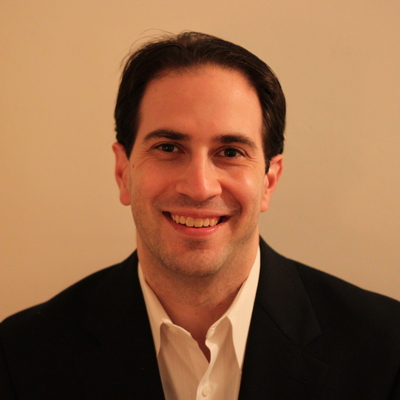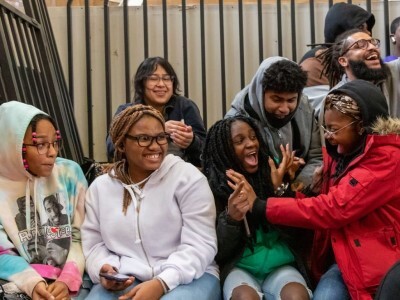Enabling Change
Driving with the Brakes On: Why Are We Trying to Do Liberatory Practices within an Authoritarian Paradigm?
Topics

Next generation learning is all about everyone in the system—from students through teachers to policymakers—taking charge of their own learning, development, and work. That doesn’t happen by forcing change through mandates and compliance. It happens by creating the environment and the equity of opportunity for everyone in the system to do their best possible work.
Why does education hold onto old notions of order, control, and authority while trying to embrace newer ideas around inquiry, self-direction, and liberation? And what can we do about it?
The past few years have seen the beginnings of a pendulum swing away from the more factory-like vision of schooling that was characteristic of the NCLB era. There is increasing interest in “21st-century skills,” “social-emotional learning (SEL),” and “deeper learning.” In the equity conversation, there is the start of a shift from understanding equity as simply closing gaps in test scores to a vision of equity that is more holistic, liberatory, and emphasizes culturally responsive pedagogy and inclusive systems, structures, and practices.
At the same time, we seem unable to let go of the past. Notions of hierarchy, control, and order remain alluring. And the result is some strange hybrids. Restorative justice within no excuses schools. Inquiry-driven instruction that leads to fixed learning targets. Competency-based instruction that allows students to move at different paces to preestablished destinations. Social-emotional learning blocks slotted into factory-style schedules. “Deeper learning” professional development by PowerPoint.
These combinations are not the best of both worlds. At a fundamental level, they are self-contradictory. Take restorative justice in a no excuses–style school, which was the subject of Sarah Fine’s excellent dissertation. The school she studied had a controlling approach to pedagogy. Teacher authority was paramount, and students were expected to follow it, or else. At the same time, facing a discipline crisis, the school had become interested in restorative justice. Restorative justice is an alternative to exclusionary approaches to discipline, one that brings together the impacted parties to discuss what happened, understand how it affected all parties, and collectively develop next steps.
The problem, as Sarah documents, is that students perceived the disjuncture between the two spaces. In class, they were being seen one way—as people whose worst instincts would emerge if they were not highly controlled—whereas in restorative circles they were being seen another way—as highly capable moral actors who were able to resolve and repair their breaches if given time and space.
At a fundamental level, we are talking about different ontologies. Ontology is a fancy word for your vision of the underlying nature of the reality in which you are operating. The school Sarah was studying was trying to maintain two different ontologies simultaneously, and the gaping chasm between them was undermining their efforts.
This raises three questions. First, why do we create these hybrids, holding onto old notions of order, control, and authority while trying to embrace newer ideas around inquiry, self-direction, and liberation? Second, what sort of ontology do we want for education? And third, practically, how can we move from a state of internal contradiction to a new and different coherence?
Why do we hold onto these hybrids? Well, likely for many of the reasons they were established in the first place. Top-down order and control are consistent with power hierarchies in most organizations. They are also consistent with longstanding purposes of schooling in which the young are socialized into the ways of the old. Racial and gender hierarchies are preserved—mostly male superintendents directing mostly female teachers, and mostly White adults directing mostly students of color. The existing grammar of schooling is also organizationally and administratively efficient, if not organized for learning or liberation, which makes it easier to slot in a little SEL here, a little restorative justice there, than to rethink the whole structure. Finally, the field is radically under-professionalized—there is no consistent preparation, no shared language, no place to learn about how different approaches reflect fundamentally different ontologies—and hence behaviorism and constructivism can sit side by side in a school without anyone ever pointing out the fundamental internal contradictions.
As a brief aside, I was once talking to a student who had gone through a program that fast tracked her into teaching, and then returned to graduate school for a master’s degree at 27. “Why come back to school,” I asked? “Well,” she said, “I had a lot of practice but no theory, and I need to remedy that.” “Isn’t it usually the opposite,” I asked, “Don’t people go into schools and say they learned all this theory but it had no practical relevance?” “It was the opposite,” she replied, “I learned a lot of techniques, but I didn’t understand the underlying reasons why I was doing things, or what the possible alternatives might have been.”
What ontology do we want for education? I discussed this concept in more length in this piece on Phi Delta Kappan, but I think that at a basic level we might be seeking an ontology that has two fundamental characteristics: 1) seeing individuals, both students and adults, as highly capable, intelligent, meaning-making creatures, whose interests and autonomy should be fully respected; 2) centering the relationships among these people, seeking to promote relationships of warmth, joy, love, and reciprocal caring. If we followed those precepts, we would be clear that good classrooms are places where students find purpose and agency, coupled with care and building a culture of inclusion and belonging.
So, then, how might we make a fuller shift? In general, I find that it is easier to change by focusing on the next step rather than contemplating the size of the mountain. But in this case, I think it’s important to acknowledge the magnitude of this shift: changing the way in which we see young people, revisiting assumptions about the importance of control for learning, and rethinking deep assumptions about race and class.
That said, change is possible. A clear starting point is to acknowledge the contradiction between more inquiry-oriented, liberatory, and humanistic practices with existing visions of control and order. Many major theorists of significant learning, including Piaget, Kuhn, and Mezirow, suggest that transformative learning happens precisely when new experiences challenge old paradigms. Kuhn says that paradigms shift when there are more anomalies than a past paradigm can hold; Piaget says that powerful learning happens when new ideas need to be accommodated rather than assimilated; and Mezirow describes how transformative adult learning often has a pattern of equilibrium, significant disequilibrium, and then a new equilibrium. All of these theories suggest the importance of sitting in the disequilibrium, acknowledging the ways in which constructivist and anti-racist practices are challenging rather than conforming to many existing ideas.
Furthermore, work on transitions of all sorts—including death of a loved one, divorce, and change in the workplace—suggests that while there is initially a period of grieving, and then a period of flux and uncertainty, there is a third stage where new possibilities unleash fresh energy. While it might be initially easier, for example, to slot an SEL block into a factory-style schedule, it can be exciting to contemplate how you might weave care for students throughout the day. While change is hard because it entails loss, the opportunity to build something new has a counterbalancing positive energy, if only you take the plunge.
Once you have started to move toward a new coherence, there are some good ways to sustain and reinforce it. Two strategies districts and schools I work with have found helpful are symmetry and fractals. Symmetry is the idea that we want to build parallelism between how we approach adults and how we hope that they will treat students. If we want to build purposeful, inclusive, relational experiences for students, we can only do that if we do the same for teachers. Fractals are the notion that the key elements of the larger whole can be found in the smallest parts. The implication of a fractal approach to leadership is that each interaction you have—each time you start a meeting with a check-in, each time you email what can be emailed and use your time together for meaty discussion—you are modeling the kind of organization you want to be and the kind of relationships you want to have.
What we are doing now is what my colleagues Bob Kegan and Lisa Lahey might call “driving with the brakes on.” Their insight is that we frequently seek to move forward but competing commitments hold us in place, even despite our stated desires for change. When people pursue reforms with contradictory ontologies, they are driving with the brakes on. But why? What is to be lost by actually embracing the kind of inquiry-driven, liberatory, and even emancipatory practices that are increasingly available in the field?
Photo at top by Oladimeji Ajegbile.




